
If one of the above is not entirely clear what kind of kiosk mode is, then remember the ATM or payment terminal - most of them work on Windows, but access you only have to one program that you see on the screen. In the specified case, it is implemented otherwise and, most likely, it works on XP, but the essence of limited access in Windows 10 is the same.
Note: In Windows 10 Pro, the kiosk mode can only work for UWP applications (pre-installed and applications from the store), in ENTERPRISE and EDUCATION versions - and for ordinary programs. If you need to limit the use of a computer not only with one application, the Parental Control of Windows 10 can help here, the guest account in Windows 10 can help.
How to configure Windows 10 kiosk mode
In Windows 10, starting from version 1809 October 2018 Update, the kiosk mode incorporating slightly changed compared to previous versions of the OS (for previous steps are described in the next section of the instruction).
To configure the kiosk mode in the new version of the OS, follow these steps:
- Go to the parameters (Win + I keys) - Accounts - Family and other users and in the "Configure Kiosk" section, click on the "Limited Access" section.

- In the next window, click "Getting Started".

- Specify the name of the new local account or select the available (Local, Not Microsoft account).
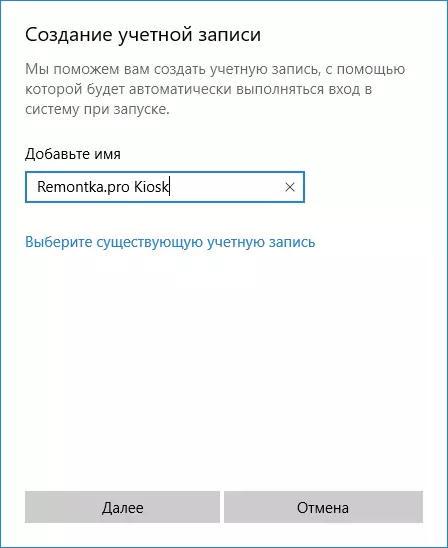
- Specify the application that can be used in this account. It is it that will run on the entire screen when entering under this user, all other applications will not be available.

- In some cases, additional steps are not required, and for some applications an additional choice is available. For example, in Microsoft Edge, you can enable the opening of only one site.
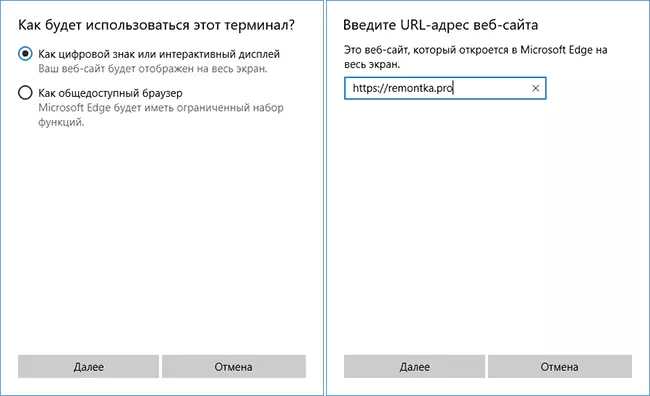
This settings will be completed, and only one selected application will be available to the created account with the mold mode of the kiosk. This application can be changed in the same section of Windows 10 parameters.
Also in additional parameters, you can enable automatic restart of the computer in case of failures instead of displaying error information.
Turning on the kiosk mode in earlier versions of Windows 10
In order to enable the kiosk mode in Windows 10, create a new local user for which the restriction will be set (more on the topic: how to create a Windows 10 user).
The easiest way to do it in the parameters (Win + I keys) - accounts - family and other people - add a user of this computer.
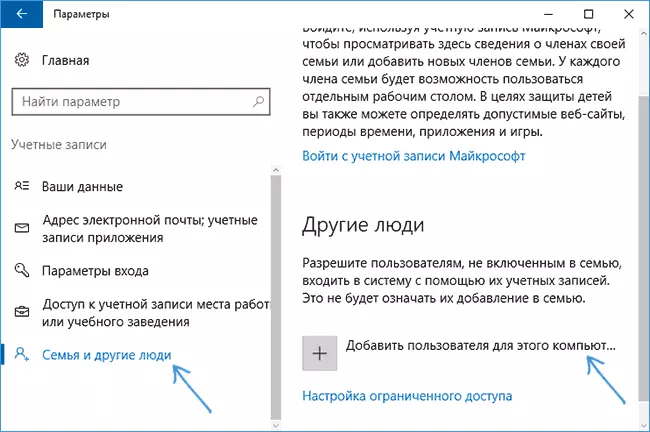
At the same time, in the process of creating a new user:
- When you request an email, click "I do not have data to enter this person."
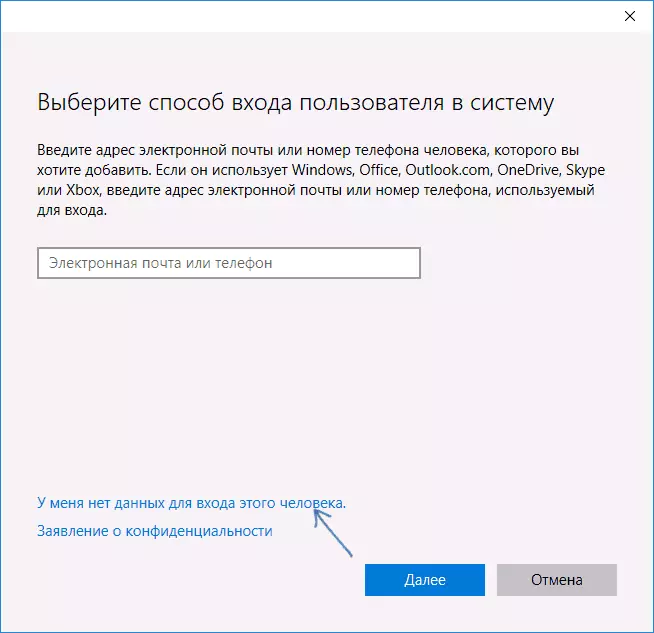
- On the next screen, at the bottom, select "Add user without Microsoft account".
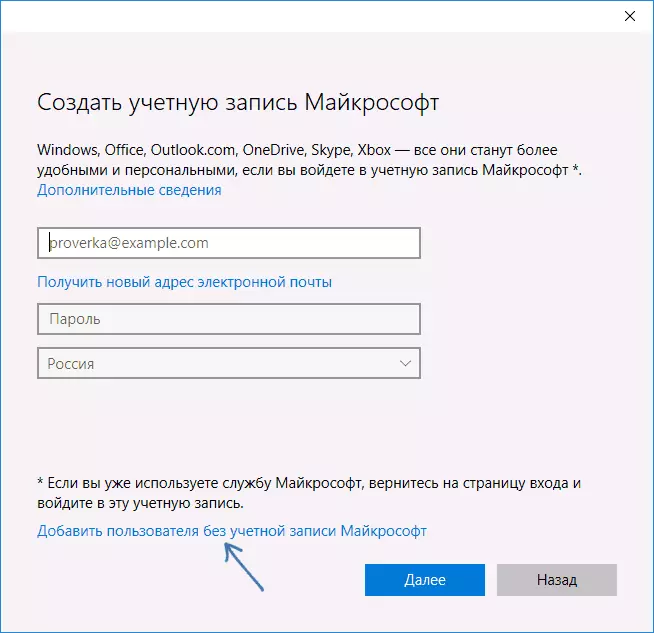
- Next, enter the username and, if necessary, the password and the tip (although for a limited kiosk regime account, the password can not be entered).
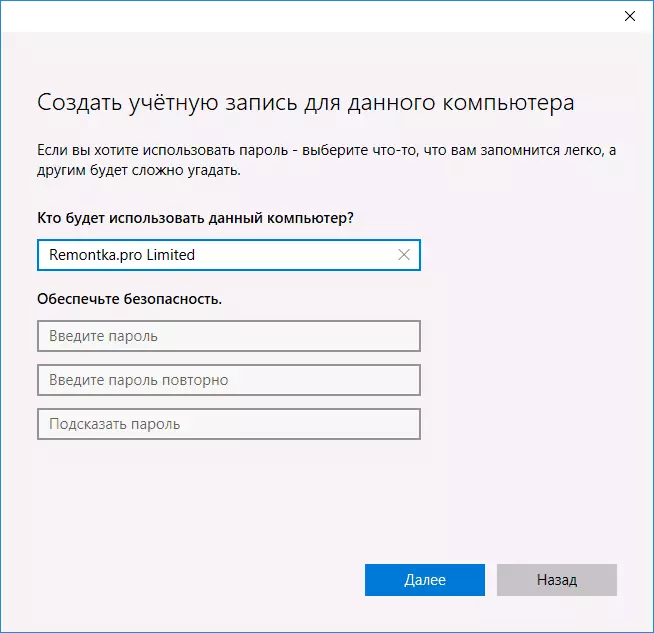
After the account is created by returning the Windows 10 account settings, in the "Family and Other People" section, click "Setting Limited Access".
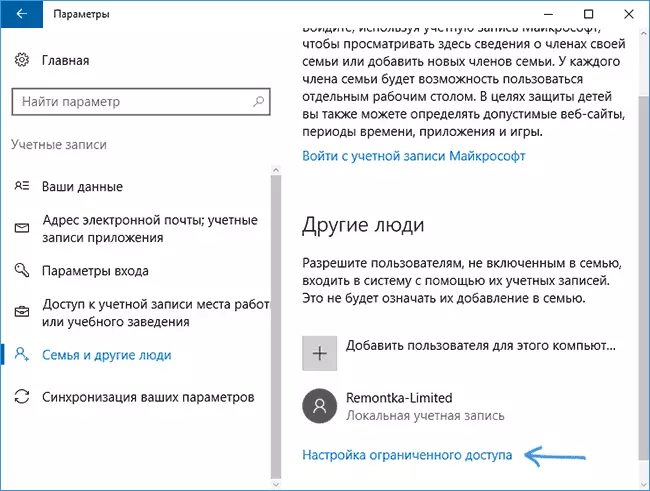
Now, everything that remains to do is to specify a user account for which the kiosk mode will be turned on and select the application that will automatically start (and which will be limited to access).
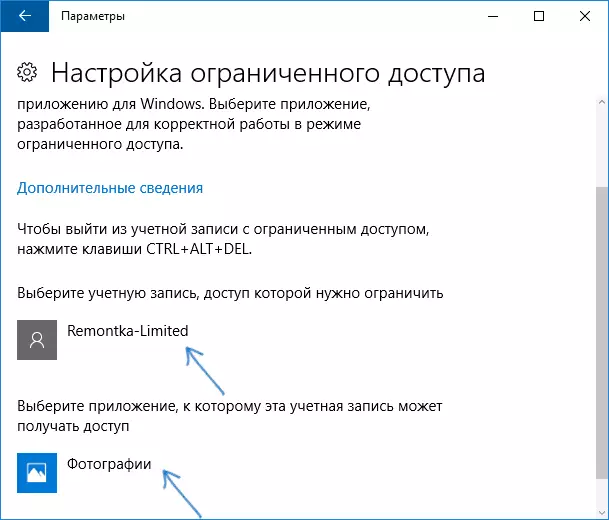
After specifying these items, you can close the parameters window - limited access is configured and ready to use.
If you go to Windows 10 under a new account, immediately after logging in (at first input, some time setting will occur) the selected application will open to the entire screen, and access to other components of the system will not work.
In order to exit the user account with limited access, press the Ctrl + Alt + Del keys to go to the lock screen and select another computer user.
I do not know exactly why the kiosk mode can be useful to an ordinary user (give a grandmother access only to solitaire?), But may it turn out that someone from readers will be useful (share?). Another interesting on the topic of restrictions: how to limit the time of using the computer in Windows 10 (without parental control).
